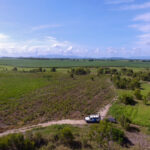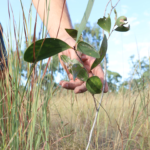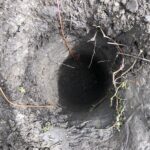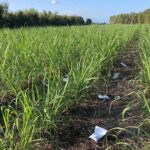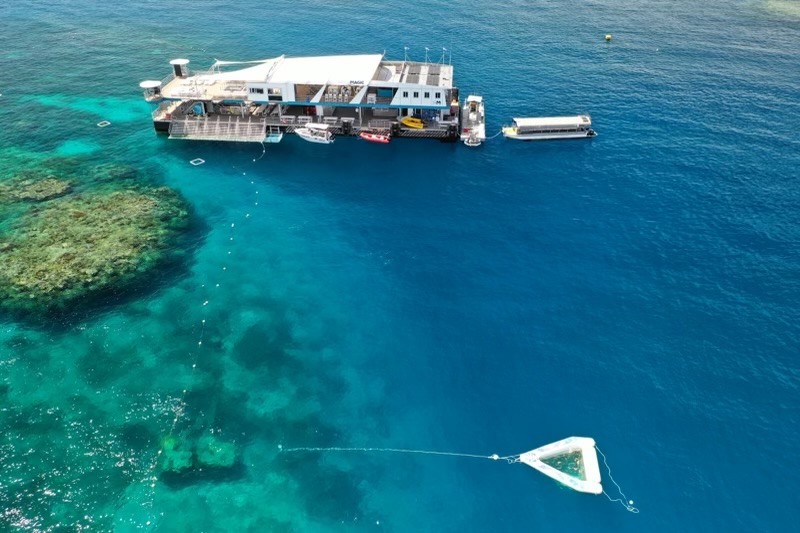The common melaleuca ‘paper-bark’ tree could be a powerhouse in not only storing carbon but filtering farm runoff – and farmers and scientists are teaming up to understand how big of an impact these native trees have.
James Cook University’s (JCU) TropWATER Centre’s Dr Adam Canning is working with Ingham farmer John Cardillo and Greening Australia in a project that’s converted 15 acres of flood-prone cane farm into melaleuca plantations.
The project investigates the amount of carbon stored by these plantations compared to non-restored areas, and their role in capturing nutrients from farm run-off mobilised during high rainfall.
Lead researcher Dr Adam Canning said the research looks at how restoration can fit in with the agricultural landscape, where there are benefits for both farmers and the environment.
“Planting melaleuca plantations on flood-prone farms has dual benefits – they are powerful carbon sinks and can help improve water quality,” he said.
“But if agricultural land is restored, it could be at a production loss to farmers, so we need to think about how restoration can have co-benefits for farmers.
“This project is finding the best way to use these flood-prone paddocks to support the long-term success of the agricultural economy by leveraging emerging ecosystem service markets.”
The research involved buring resin bags in the soil for 12 months to measure the nitrate leaching to aquatic ecosystems, as well as assessing soil carbon and microbiome levels.
Canefarmer John Cardillo, who has been involved in various revegetation projects, said the low-lying paddocks were wasted on cane because they were flood prone.
“Revegetating these paddocks is a good way to use this land,” he said.
“These paddocks are so close to the coast – the planted trees are great for holding sediment and it helps with erosion during floods.
“It might seem like a drop in the ocean, but this all adds up.”
Greening Australia’s Sean Hoobin said, “Land which isn’t good for cane can be converted to carbon farming both from vegetation and blue carbon methods – bringing additional income to landholders.”
“Greening Australia’s work with JCU to measure the water quality benefit of melaleuca wetlands, means that farmers may also be able to receive a Reef Credit payment to increase the overall value of restoration.”
Canning said there’s likely many flood-prone cane paddocks in Queensland that can be converted to melaleuca wetlands, and the results from this project could play big role in future restoration initiatives in the agricultural landscape.
“We have also been scoping the potential for planting over 120 other water-tolerant native tree species in locations across the Great Barrier Reef catchment to support carbon sequestration, nutrient runoff treatment and biodiversity.”
This article appeared in Wet Tropic’s Reef and Rivers magazine: https://wettropicswaterways.org.au/wp-content/uploads/2022/08/Reef-and-Rivers-Issue-2_final_spreads_small.pdf

